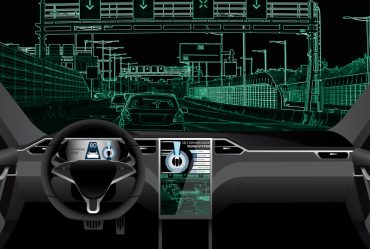
By adopting AI and FoRI, stadium security teams enhance the safety of attendees, increase the confidence of event organizers, and ensure that the spotlight remains where it ought to be, on the event.
Stadiums bring together people from all walks of life to enjoy sporting events, concerts, and other large gatherings. However, ensuring the safety of tens of thousands of attendees in such a vast and dynamic environment poses complex and evolving challenges. The task of securing these arenas demands a sophisticated, multi-layered security strategy equipped with the latest technological advances. Pioneering platforms equipped with artificial intelligence (AI) and Fiber Optic Ring Interferometer (FoRI) systems are poised to drastically enhance how we protect stadiums and large public spaces.
The top challenges for stadium security teams
One of the most obvious but pressing challenges in securing a venue like a stadium is the facility’s sheer scale. These massive buildings, complete with their parking garages, parking lots, and subterranean corridors, accommodate crowd capacities ranging from tens of thousands to over a hundred thousand. Their designs incorporate numerous entry points, seating sections, and hidden areas, all of which require constant surveillance.
In addition, stadium security teams must prepare for a diverse range of threats. They face the potential of crowd surges, public disorder, vandalism, and targeted attacks against individuals. Additionally, the rise of sophisticated threats, such as drone activity and cyber-attacks, adds layers of complexity to stadium security operations.
The cameras and sensors in modern stadiums generate vast amounts of data. While these tools are invaluable for monitoring activities and identifying suspicious behavior, they also pose a significant challenge regarding data management and analysis.
Stadium security teams tell us that their number-one challenge is visually understanding the stadium in real time. They require between 900 and 1,000 cameras to cover every part of the area and have no physical way to monitor and interpret all that footage. Security personnel sift through a flood of incoming information to identify threats, and the task can be overwhelming without the assistance of advanced technologies like artificial intelligence.
Combining fiber optic ring interferometer technology with the power of AI
FoRI technology employs a fiberoptic loop as a sensing element. When deployed in stadiums, these loops create a detection net that is highly sensitive to the slightest disturbance. Believe it or not, they can even detect the sound of a falling snowflake.
Integrating AI with this highly sensitive FoRI technology takes stadium security to the next level. In a nutshell, FoRI technology becomes the stadium’s eyes and ears, and AI becomes its central nervous system. The combined power of these technologies identifies security anomalies and tells the security team where to look. The new technology simply makes existing security systems smarter.
Essentially, AI algorithms listen for what we call audio anomalies. It is like having a thousand pairs of eyes around the stadium.
The system scans incoming data for occurrences that stand out. These anomalies draw the AI’s attention when they rise above or fall below the decibel level of a stadium’s standard crowd noise, which is around 80 decibels. For example, a spike in sound in section 201 could indicate the beginning of an altercation.
When AI detects such a security anomaly, it points a camera in that direction, sends 60 seconds of the information to the system’s server, and sends a detailed report to the stadium’s security team. The security team receives real-time footage and a description of how many people are involved, what clothes they are wearing, where they are going, and what they look like.
The stadium’s AI records, classifies, and characterizes each anomaly through the lens of a sophisticated risk tolerance level. Similar systems in stadiums across the country and around the world are doing the same. Each time the system detects and reports an anomaly, its risk assessment becomes a little smarter.
This technology will ultimately enable the stadium itself to understand what is happening anywhere inside the fiber optic ring. As the system becomes smarter, It allows security teams to respond quicker, control crowds more efficiently, and keep event attendees safer.
Installing portable FoRI security systems
A critical benefit of FoRI systems is their ability to be discreetly integrated into existing infrastructures without the need for invasive installation procedures. Their fiber optic cables are unaffected by electromagnetic discharges, making them ideal for outdoor and indoor settings alike.
A second benefit of this type of security system is its extensive coverage. The FoRI system can extend over vast distances, offering broad coverage that can secure every corner of a stadium. This 360-degree protection ensures no threat goes undetected.
Combining artificial intelligence with Fiber Optic Ring Interferometer technology creates a security system that offers both durability and sustainability. FoRI systems are not only weather-proof — immune to the effects of wind, sand, and temperature fluctuations — but also low in power consumption. They can be powered by battery, DC, or solar energy, adding to their utility and environmentally friendly profile.
Incredibly, this type of advanced system is also extremely easy to operate for the user. It is portable and plug-and-play in nature. The fiber optics are easily camouflaged, and the entire system can be managed from a mobile device, enabling security teams to monitor and react remotely.
Leveraging AI and Fiber Optic Ring Interferometer technology for a safer stadium experience
In the battle for public safety, every second counts. Technologies that meld the accuracy and adaptability of AI with the sensitivity and subtlety of FoRI systems represent the future.
With its unique capability for early detection and situational awareness, an AI-powered FoRI platform provides stadium security personnel with the tools necessary to approach potential situations preemptively. The adaptive AI-backed systems not only detect but also learn from each disturbance, continually refining the ability to distinguish between benign and harmful incidents.
Most stadiums across the United States can already have up to 14 layers of security. The combination of new AI and FoRI technology is meant to be just one more added layer that brings increased peace of mind. By adopting this innovative approach, stadium security teams enhance the safety of attendees, increase the confidence of event organizers, and ensure that the spotlight remains where it ought to be. Namely, on the event.





























